Martin Edwards's Blog, page 163
April 27, 2016
The Return of the Malice Domestic Anthologies

By the time you read this, I will - with any luck - be in Washington DC, ahead of this year's Malice Domestic convention. The Malice community is especially warm and welcoming, something I first discovered rather more than ten years ago, when Ann Cleeves (not then a household name) and I (still not a household name) decided to take part. I've really enjoyed making friends at Malice, including members of the highly efficient board such as Verena Rose, Rita Owen and Joni Langevoort. Add to that list Shawn Reilly Simmons, herself a crime writer with a fast-growing following, whom I met for the first time last year. Shawn, pictured below, is very hard working, and among her various activities is a new one, that of co-editor of the newly revived Malice anthologies. I'm glad to host this guest blog, where she supplies more details:
"Malice Domestic is pleased to announce we are once again publishing an annual anthology of traditional mystery stories. From 1992 to 2001 there were ten Malice anthologies published, presented by authors such as Mary Higgins Clark, Anne Perry and Phyllis A. Whitney, just to name a few.
After a fifteen year hiatus, we’re proud to bring back this tradition with the release of Malice Domestic 11: Murder Most Conventional. The anthology includes twenty-two original stories and one modern classic reprint, each representing their own take on the “cozy” style of mystery, those in the tradition of Agatha Christie.
We were thrilled when Katherine Hall Page agreed to present the first in the new generation of anthologies. I asked her how she felt about it and she said: “After a truly criminal interlude—fifteen years!—it is a joy to present the latest volume in the series of acclaimed anthologies. There is a particular pleasure in reading short stories, similar to relishing appetizers. Yet, taken as a whole, Murder Most Conventional is a full-course banquet!”
We couldn’t agree more. Malice 28, the fun fan convention that celebrates the traditional mystery, will be held in Bethesda, Maryland, from April 29-May 1. We’re looking forward to welcoming our honored guests, including Martin who is representing Sarah Caudwell for Malice Remembers. Murder Most Conventional is available for pre-order (http://tinyurl.com/hku7k6p) and will be available for sale at Malice 28. For more info about Malice visit us at www.MaliceDomestic.org
Shawn Reilly Simmons is the author of the Red Carpet Catering mystery series, a member of the Malice Domestic Board of Directors, and a contributing author to the Murder Most Conventional anthology. www.ShawnReillySimmons.com

Published on April 27, 2016 08:30
April 25, 2016
Giving an Author Talk
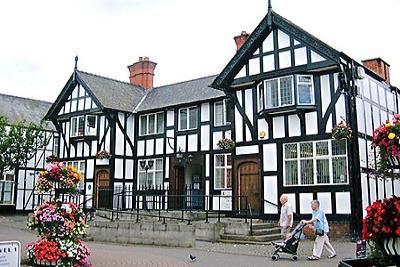
Now that I am only a part-time lawyer, I have the chance to do more fun stuff connected with writing, and I'm keen to make the most of the opportunities that come my way. When I was a partner in my firm, I had to turn down lots of invitations, so although I still need to carve out time for the actual business of writing, I also like to get more involved with related activities. Author talks are an example.
At one time, I was extremely nervous about public speaking. I'm not by nature a public performer, and giving legal lectures in particular I found very hard work. But because I love writing, I find talking about books is easier, and over the years, I've grown in confidence, and become much readier to accept invitations to speak.. And last week I made a wonderfully nostalgic pilgrimage back to the Brunner Library in Northwich. As the picture shows, it's one of the town's black and white buildings, and it was the very first public library I ever joined - first, the children's library, and then (after I discovered Agatha Christie) the adult section.
I am a big fan of libraries,and I'm glad that those in Cheshire, like those in Nottinghamshire I visited recently, are coping well despite the severe financial pressures. Much depends on the initiative and enterprise of the staff, and those I've met in both counties are doing a great job in adapting to the brave new world in which libraries now exist. I tailored my talk to include a few anecdotes about my own experiences of the Brunner Library (named after Sir John Brunner, local benefactor and a founder of the precursor to ICI).
It was grand to see some familiar faces in an audience which filled the room. Among other pleasures, I met a lady with whom, it turned out, I was at school from the age of four. I hadn't seen her since we were both eleven, and it was lovely to make her acquaintance again. She even brought along a photograph taken of us as pupils of the reception class, and we just about managed to identify everyone else in the picture. But it was sobering how many of them have died since then; another reason why it's good to seize opportunities when they come along. I really enjoyed my return to Northwich, and I'm delighted to have been given a chance to wander down Memory Lane - an unexpected benefit of giving an author talk.
Published on April 25, 2016 02:44
April 22, 2016
Forgotten Book - The Riverside Villas Murder
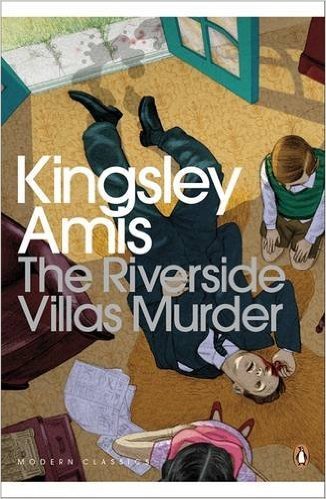
Kingsley Amis published The Riverside Villas Murder in 1973, and I read it not long after that, during a phase when I was very keen on Amis' work. Oddly enough, my enthusiasm for him faded after attending a talk by him at the Oxford Union - perhaps a salutary reminder for authors that events don't always have the desired effect on one's readership! There's no doubt that he was a talented writer, although I'm not sure time has been equally kind to everything that he wrote. But this particular novel is nowadays branded as a Penguin Modern Classic, and is certainly interesting to crime fans.
When I first read the book, I was intrigued that Amis was writing a homage to the classic detective story, but I felt disappointed with the resolution of the story, mainly because I found the whodunit element unsatisfactory. Re-reading the novel recently,with lowered expectations, I was pleasantly surprised. It's not a masterpiece, but it's interesting and very readable.
The events of the story are set in 1936, and Amis makes direct reference to detective fiction of the period. Anthony Berkeley is name-checked, while the protagonist, 14 year old Peter Furneaux, is lent a copy of John Dickson Carr's The Hollow Man, and the text includes a quote from that splendid story. Amis was much keener on Carr than on Christie, and the 'howdunit' aspect of the plot is the cleverest aspect of the whole novel.
Young Peter's attempts to broaden his sexual experience are rudely interrupted by the murder of an unpleasant chap called Inman, who has been threatening to reveal the dark secrets of supposedly respectable members of their suburban community. Peter doesn't get very far with 15 year old Daphne, but has more joy with a married neighbour, and their affair plays a significant part in the development of the plot. There's plenty of humour, and some neat characterisation, even though there's a surprising lack of tension in the build-up to the revelation of the culprit's identity. Despite its flaws, I enjoyed this book much more the second time around. Definitely worth a read, even though it's a stretch to call it a modern classic.
Published on April 22, 2016 05:13
April 20, 2016
Complicity - film review
Complicity is a film made as long ago as 2000; it didn't make many waves at the time of its release, despite the fact that it was based on a book by Iain Banks, but it still seems fresh and refreshingly different. In fact, it's only the snippets of technology - clunky mobile phones and computers in particular -that give the film's age away.
Cameron Colley is a young Scottish journalist whose radical political views tend to infuse everything he writes, to the detriment of his career. Cameron is played by Jonny Lee Miller - who is, I learned, the grandson of Bernard Lee, who played M in the early Bond movies - and he has a long-running affair with Yvonne, the wife of a friend; she's played by Keeley Hawes, whose performance is, as usual, compelling.
Cameron receives a series of mysterious phone tip-offs from a source who is disguising his voice. His attention is drawn to a series of gruesome deaths. There seems to be some form of link between the deaths and arms sales to Iraq, but before long, the police become involved, and Cameron himself becomes the prime suspect of the dogged detective. The cop is played by Brian Cox, and other notable cast members include Bill Paterson and Alex Norton, who was Burke in the later series of Taggart.
Never mind complicity, the storyline is complicated, and it's not always easy to understand what is going on. As the plot continues to thicken, it becomes apparent that that the murders may have some personal connection to Cameron, and his erratic past. The soundtrack is pretty good, and there is some excellent photography of superb Scottish scenery. Not the most plausible story, to be honest, but a very watchable movie. I'm surprised it's not better known.
.
Cameron Colley is a young Scottish journalist whose radical political views tend to infuse everything he writes, to the detriment of his career. Cameron is played by Jonny Lee Miller - who is, I learned, the grandson of Bernard Lee, who played M in the early Bond movies - and he has a long-running affair with Yvonne, the wife of a friend; she's played by Keeley Hawes, whose performance is, as usual, compelling.
Cameron receives a series of mysterious phone tip-offs from a source who is disguising his voice. His attention is drawn to a series of gruesome deaths. There seems to be some form of link between the deaths and arms sales to Iraq, but before long, the police become involved, and Cameron himself becomes the prime suspect of the dogged detective. The cop is played by Brian Cox, and other notable cast members include Bill Paterson and Alex Norton, who was Burke in the later series of Taggart.
Never mind complicity, the storyline is complicated, and it's not always easy to understand what is going on. As the plot continues to thicken, it becomes apparent that that the murders may have some personal connection to Cameron, and his erratic past. The soundtrack is pretty good, and there is some excellent photography of superb Scottish scenery. Not the most plausible story, to be honest, but a very watchable movie. I'm surprised it's not better known.
.
Published on April 20, 2016 14:28
April 19, 2016
Starting a New Series - guest blog by Michael Jecks
Michael Jecks is one of our leading writers of the history mystery, although he has also occasionally ventured into the field of contemporary crime. His new book is Rebellion's Message, set in the reign of Bloody Mary Tudor and published by Severn House. I have just received my copy, but as I'm rather behind with my reading, I haven't started it yet. In the meantime, I asked Mike - a former Chair of the CWA, and newly appointed as Secretary of the Detection Club, if he'd like to contribute a guest post to this blog. Here is his account of his misadventures when starting his new series:
"It's always difficult to embark on a new novel, but the problems multiply when you are writing a new series. Usually the problems lie in things like, say, inventing a new character, researching a new period, or perhaps trying to find the right location for your action. Not for me any of those trivial issues. Fate has always had it in for me. It’s the reason I had thirteen jobs in thirteen years before I felt forced to try my hand at writing. Last year, when I set out to write a new series, Fate sought to give me a whole different level of pain. Initially, as I was setting out my plans, fate had a test-disaster for me. My laptop didn’t work. Not a problem. I did the usual things, turned it off, turned it on, lifted and shut the lid, inspected it carefully - only to discover a few drops of water seeping out. Water? That was the point that a fifteen-year-old daughter became embarrassed and explained that she thought she’d cleaned up the spillage. Dead laptop. An insurance claim later, I was happily working at my desktop machine when I saw a glitch. It was minor, but what the heck? I had a backup disk drive. There was nothing that could give me any problems. So I recovered my main disk from the backup, only to learn too late that the backup was itself corrupted. It wiped my whole computer. Fortunately I use Dropbox, lots of DVDs and the cloud. Sadly, many DVDs had aged badly, and the cloud wasn’t as efficient as I’d hoped. I lost three weeks recovering things.
At last, all was well. I returned to my new series, to discover that the screen was showing pink Chinese characters. Ho ho, I thought. Then I learned that the screen was dead, and on a “vintage” machine like mine (five years old) it was unmendable. My machine was dead.
Does anybody wonder why I am writing my next book with a pen and ink?"
"It's always difficult to embark on a new novel, but the problems multiply when you are writing a new series. Usually the problems lie in things like, say, inventing a new character, researching a new period, or perhaps trying to find the right location for your action. Not for me any of those trivial issues. Fate has always had it in for me. It’s the reason I had thirteen jobs in thirteen years before I felt forced to try my hand at writing. Last year, when I set out to write a new series, Fate sought to give me a whole different level of pain. Initially, as I was setting out my plans, fate had a test-disaster for me. My laptop didn’t work. Not a problem. I did the usual things, turned it off, turned it on, lifted and shut the lid, inspected it carefully - only to discover a few drops of water seeping out. Water? That was the point that a fifteen-year-old daughter became embarrassed and explained that she thought she’d cleaned up the spillage. Dead laptop. An insurance claim later, I was happily working at my desktop machine when I saw a glitch. It was minor, but what the heck? I had a backup disk drive. There was nothing that could give me any problems. So I recovered my main disk from the backup, only to learn too late that the backup was itself corrupted. It wiped my whole computer. Fortunately I use Dropbox, lots of DVDs and the cloud. Sadly, many DVDs had aged badly, and the cloud wasn’t as efficient as I’d hoped. I lost three weeks recovering things.
At last, all was well. I returned to my new series, to discover that the screen was showing pink Chinese characters. Ho ho, I thought. Then I learned that the screen was dead, and on a “vintage” machine like mine (five years old) it was unmendable. My machine was dead.
Does anybody wonder why I am writing my next book with a pen and ink?"
Published on April 19, 2016 15:38
April 18, 2016
The Ashes of London by Andrew Taylor - review
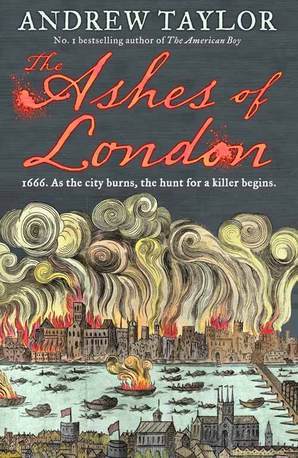
Like many people, I enjoy historical fiction, and the past twenty years or so has seen a massive increase in the number of historical mysteries being written. There are various reasons for this, including the challenges inherent these days in writing contemporary fiction - over-familiarity is a problem, and so is the reach of new technology. But writing a good historical mystery is by no means a doddle.
I doubt it any crime writer, in Britain or elsewhere, has shown such consistent mastery of historical mystery writing in the past couple of decades than Andrew Taylor. Possibly the most impressive feature of his work is his ability to write in compelling fashion about different places and periods of the past. He's equally at home in the rural England of his post-war Lydmouth series and with much more distant times, as in The American Boy. And his Thirties novel Bleeding Heart Square is quite superb.
Now he's turned his attention to seventeenth century London. The Great Fire of 1666 provides a dramatic backdrop to the opening pages of The Ashes of London, a meaty tale in which James Marwood, the son of a supporter of Cromwell, tries to make his way in a world where Charles II has been restored to the throne. A strange encounter with a young woman dressed as a boy introduces him fleetingly to Cat Lovett, who will play a crucial part in the events that follow.
Cat seems destined for a loveless marriage before Fate, in the shape of her odious cousin Edward, intervenes. Soon she is on the run, and we follow her story, and James', as the two young people fight against the legacy of the past, and in so doing become enmeshed in murderous intrigue. This is an intensely readable novel; Taylor has done his research, but wears it lightly. The result is an enjoyable mystery that is intended as the first of a series.
Published on April 18, 2016 02:59
April 16, 2016
Cat Among the Herrings by L.C. Tyler
Cat Among the Herrings is the seventh book in a series of comic crime novels which began with the excellent
Since that time, I've got to know Len Tyler quite well, and as he is the Chair of the CWA,and I am his obedient Vice Chair, you wouldn't expect me to give him a cruel review, would you? Nor am I going to do so. Rather, let me talk a bit about comic crime in the context of Len's books. The first thing to be said is that it's very difficult to write a consistently successful series of comic crime novels. Not many people have done it - the few exceptions include such highly skilled writers as Colin Watson and Simon Brett.
Len's method is very sensible. He takes, or so it seems to me, a slightly different approach to each book in the series, and thereby contrives to keep things fresh. The law of diminishing returns, as has often been said, does apply to comic crime series (Joyce Porter was a writer who began brilliantly, but most of her later work didn't really achieve the same standard). Happily, Cat Among the Herrings avoids the pitfall of sameyness.
The USP of this book is that it combines a present day murder mystery with a case dating back to the 19th century. This is a method comparable to that employed by, among others, Kate Ellis, but I can't think of a comic crime novel in which it has been used before. Len's interest in history - he's also written historical mysteries which I haven't got round to yet - ensures that this is a strong entry in the series. As for the comedy, there are many great lines, especially in the first half of the book, before the plot really thickens. It's especially entertaining if you're involved in writing crime, but even if you aren't, there's plenty here to keep you amused.
Since that time, I've got to know Len Tyler quite well, and as he is the Chair of the CWA,and I am his obedient Vice Chair, you wouldn't expect me to give him a cruel review, would you? Nor am I going to do so. Rather, let me talk a bit about comic crime in the context of Len's books. The first thing to be said is that it's very difficult to write a consistently successful series of comic crime novels. Not many people have done it - the few exceptions include such highly skilled writers as Colin Watson and Simon Brett.
Len's method is very sensible. He takes, or so it seems to me, a slightly different approach to each book in the series, and thereby contrives to keep things fresh. The law of diminishing returns, as has often been said, does apply to comic crime series (Joyce Porter was a writer who began brilliantly, but most of her later work didn't really achieve the same standard). Happily, Cat Among the Herrings avoids the pitfall of sameyness.
The USP of this book is that it combines a present day murder mystery with a case dating back to the 19th century. This is a method comparable to that employed by, among others, Kate Ellis, but I can't think of a comic crime novel in which it has been used before. Len's interest in history - he's also written historical mysteries which I haven't got round to yet - ensures that this is a strong entry in the series. As for the comedy, there are many great lines, especially in the first half of the book, before the plot really thickens. It's especially entertaining if you're involved in writing crime, but even if you aren't, there's plenty here to keep you amused.
Published on April 16, 2016 05:04
April 15, 2016
Forgotten Book - Bury Him Darkly
Bury Him Darkly by Henry Wade (1936) is, at first glance, a Golden Age novel of a familiar type. A series of robberies take place at jewellers' shops; in the course of one of them, a man dies; a suspect has an alibi; and the police go to great lengths to break it down. It sounds like the sort of book that Freeman Wills Crofts specialised in, and there's no doubt that Crofts was an early influence on Wade. But there is more to Wade's book than meets the eye.
Crofts' books about Inspector French record meticulous police investigations into carefully engineered crimes. This book goes further. We are presented with a picture of a team of police officers, from Assistant Commissioner (Crime) to constables, working together in the common cause. Best of all, we follow the enquiries of Wade's finest character, Inspector John Poole, and learn that, for all his brilliance, he is also very human and fallible.
The details of the crime are cleverly put together, and although one can make a stab at figuring out whodunit quite early in the story, Wade keeps a number of pleasing surprises up his sleeve. On a personal note, I was fascinated when (as in at least one other Golden Age novel) a body is found on a rubbish dump. When I was writing my first book, All the Lonely People, and came up with the same idea as a plot twist, I believed I was being highly topical,as well as making a sort of social comment about the Britain of that time. Ah, the naivete of youth! It's harder to be truly original than I realised.
Wade is very good at depicting the way in which police officers interact, and does not not neglect the petty jealousies, the mistakes, and the temptations to bend the rules. It's all rather sophisticated. Wade's presentation of female characters at this point was not quite as compelling (he remedied this in Lonely Magdalen) but he really could write. Even if you find alibi-breaking dull - and it's not my favourite form of fictional detection - this book is well worth a read. And the unusual ending is also very good and very life-like.
Published on April 15, 2016 02:00
April 13, 2016
East Anglia, the Norfolk Broads, and the CWA Conference
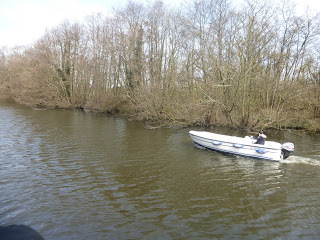

East Anglia is a lovely part of the world that has featured in plenty of detective stories over the years. Among them is C.P. Snow's debut novel, Death Under Sail, a murder mystery set on the Norfolk Broads. In recent years, as my enthusiasm for travel on the water has grown, I've become keen on the idea of a cruise on the Broads,and finally on Monday morning - gloriously sunny, luckily - I realised that ambition, sailing from Wroxham. It made a wonderful finale to a great trip.

My reason for venturing so far afield (and there's no quick way to Norfolk from Cheshire, or from most places, come to that) was that the CWA's annual conference was held in Norwich. I decided to turn the journey from a chore into pleasure by stopping off at various places and making a five day break of it. So the trip began with various halts at places like Stamford in Lincolnshire (a lovely and historic town, quite unfamiliar to me) and King's Lynn, which I'd visited only once before - when I was in the early stages of planning my first Harry Devlin novel.
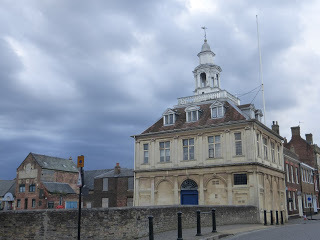
Then it was on to Norwich, but via a series of resorts, mostly quite small, on the north coast of Norfolk. Again the weather was kind, so it was possible to see places like Hunstanton, Wells and Sheringham at their best. I also went on a pilgrimage to the church at Stiffkey (pronounced Stookey), famous for the controversial Rector Harold Davidson, who was eventually eaten by a lion (I promise I'm not making this up...)The resort which gave its name to Francis Beeding's classic Death Walks in Eastrepps doesn't exist, but I did drive through Northrepps, on the outskirts of Cromer,before reaching The Maid's Head Hotel, venue for the conference, and said to be the oldest hotel in the country. It is located in a road called...Tombland.
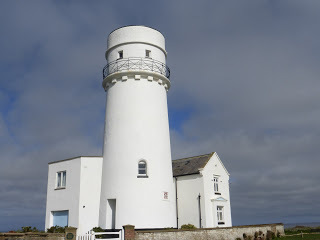
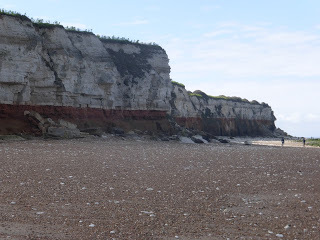
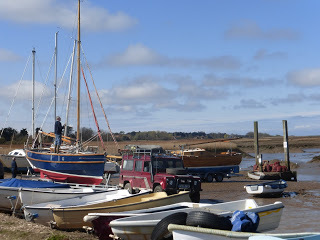

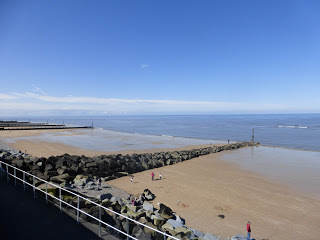
One of the joys of these conferences is meeting old friends, in some cases for the first time in ages. Kathryn Skoyles, who helped Dea Parkin make it a really convivial event, is someone I've known for more than twenty years; we first met at the Shots on the Page convention which used to be held in Nottingham. It was great to catch up with her, and on Sunday afternoon she proved an expert guide to the amazing Old Vicarage gardens at East Runton, where she volunteers; they are justifiably said to be one of the finest private gardens in Britain.
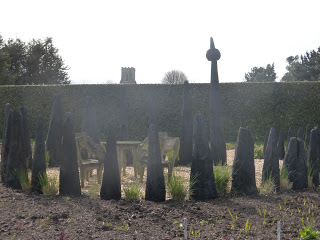

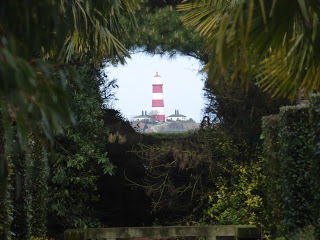

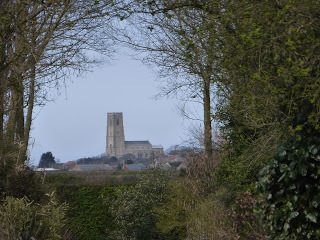
As always, there were lots of good things happening during the conference. A guided walk through the city on Friday, followed by a buffet meal in a crypt. Talks on forensics, counter-terrorism, business opportunities for writers, and new ideas about the Lord Lucan case - something for everyone. Among the optional trips was a visit to the prison museum in the old Norwich Castle Keep - fascinating. Plus a really good dinner, with a witty speaker who is a retired coroner. I do strongly recommend CWA members who haven't attended a conference in the past to give it a try in future. It's a different sort of experience from, say, Crimefest or St Hilda's, but packed with interest - and excellent company.
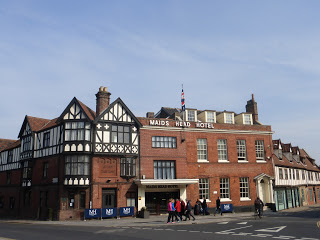

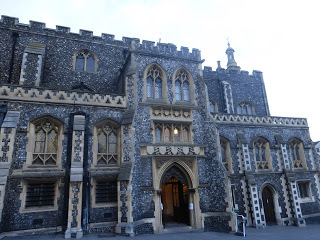
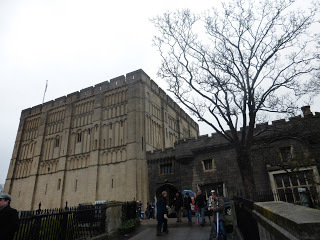

Published on April 13, 2016 03:00
April 11, 2016
The Gray Man - film review
The Gray Man is a 2007 made, it seems, with a low-budget and a non-starry cast, but I found it rather more impressive than many a blockbuster. It's based on a true story from the 20s and30s, about the American cannibal and paedophile Albert H. Fish. I'd heard of Fish, but didn't know much about his homicidal career, which in fact was as gruesome as you could possibly imagine. But a great merit of this film is that it avoids the sensational and the salacious as far as practicable.
A preludes shows Fish being mistreated during his boyhood at an orphanage, and the screenplay makes clear that this played a major part in turning him into a quite monstrous killer. Fish is played by Patrick Bauchau, an actor unknown to me, who does a very good job of capturing the seemingly irreconcilable aspects of Fish's personality. He has charm, and is in some respects a good father, but he's also capable of repellent acts of sheer evil.
Jack Conley plays Will King, a cop who eventually becomes involved when Fish abducts a young girl called Grace Budd. The scenes in which Fish takes Grace on a trip - supposedly to another girl's birthday party - are sad and deeply chilling. Suffice to say that her story did not have a happy ending. The tragic folly of Grace's mother - who wrongly identifies someone else as the kidnapper - is also conveyed with some pathos.
I don't claim that this film is a masterpiece. It's hard to understand what makes a man like Fish behave in such a way, and the story of his life was rather more complicated than the screenplay suggests. But it is crisply and capably written, and held my attention from start to finish. Such a horrible story could easily have become a gorefest. Instead, The Gray Man gives us at least a partial insight into one of the most extraordinary American murder cases and does not treat its lurid subject matter in an exploitative way - and it's all the better for that..
A preludes shows Fish being mistreated during his boyhood at an orphanage, and the screenplay makes clear that this played a major part in turning him into a quite monstrous killer. Fish is played by Patrick Bauchau, an actor unknown to me, who does a very good job of capturing the seemingly irreconcilable aspects of Fish's personality. He has charm, and is in some respects a good father, but he's also capable of repellent acts of sheer evil.
Jack Conley plays Will King, a cop who eventually becomes involved when Fish abducts a young girl called Grace Budd. The scenes in which Fish takes Grace on a trip - supposedly to another girl's birthday party - are sad and deeply chilling. Suffice to say that her story did not have a happy ending. The tragic folly of Grace's mother - who wrongly identifies someone else as the kidnapper - is also conveyed with some pathos.
I don't claim that this film is a masterpiece. It's hard to understand what makes a man like Fish behave in such a way, and the story of his life was rather more complicated than the screenplay suggests. But it is crisply and capably written, and held my attention from start to finish. Such a horrible story could easily have become a gorefest. Instead, The Gray Man gives us at least a partial insight into one of the most extraordinary American murder cases and does not treat its lurid subject matter in an exploitative way - and it's all the better for that..
Published on April 11, 2016 01:00



